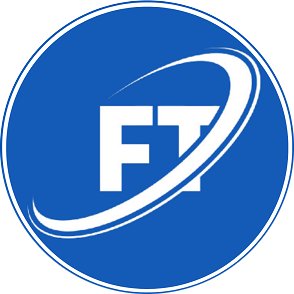Steps to Create a custom WordPress blog theme

Creating a custom WordPress blog theme requires structuring your files properly and coding them using PHP, HTML, CSS, and JavaScript. Below is a step-by-step guide covering all aspects, including file structure, descriptions, and explanations.
1. WordPress Theme File Structure
A WordPress theme consists of multiple files, primarily stored in the wp-content/themes/your-theme-name/ directory.
your-theme-name/
│── style.css
│── index.php
│── functions.php
│── header.php
│── footer.php
│── sidebar.php
│── single.php
│── page.php
│── archive.php
│── search.php
│── 404.php
│── assets/
│ ├── css/
│ │ ├── main.css
│ ├── js/
│ │ ├── script.js
│ ├── images/
│── template-parts/
│ ├── content.php
│── inc/
│ ├── customizer.php
│── screenshot.png
2. Core Files and Their Purpose
Each file plays a specific role in the theme.
A. style.css (Theme Information & Styling)
This file contains theme metadata and CSS styles.
/*
Theme Name: My Custom Blog Theme
Theme URI: https://yourwebsite.com/
Author: Your Name
Author URI: https://yourwebsite.com/
Description: A simple custom WordPress blog theme.
Version: 1.0
License: GPL v2 or later
Text Domain: mycustomtheme
*/
body {
font-family: Arial, sans-serif;
margin: 0;
padding: 0;
background-color: #f4f4f4;
}
h1 {
color: #333;
}
B. index.php (Main Template File)
This serves as the main template that loads blog posts dynamically.
<?php get_header(); ?>
<main>
<?php
if (have_posts()) :
while (have_posts()) : the_post();
get_template_part('template-parts/content', get_post_format());
endwhile;
else :
echo '<p>No posts found.</p>';
endif;
?>
</main>
<?php get_footer(); ?>
C. functions.php (Theme Functions & Features)
This file registers theme features, menus, and scripts.
<?php
function mytheme_setup() {
add_theme_support('title-tag');
add_theme_support('post-thumbnails');
register_nav_menus([
'primary' => __('Primary Menu', 'mycustomtheme'),
]);
}
add_action('after_setup_theme', 'mytheme_setup');
function mytheme_enqueue_scripts() {
wp_enqueue_style('main-style', get_stylesheet_uri());
wp_enqueue_script('custom-script', get_template_directory_uri() . '/assets/js/script.js', ['jquery'], false, true);
}
add_action('wp_enqueue_scripts', 'mytheme_enqueue_scripts');
D. header.php (Header Section)
Contains the opening <head> and site navigation.
<!DOCTYPE html>
<html <?php language_attributes(); ?>>
<head>
<meta charset="<?php bloginfo('charset'); ?>">
<meta name="viewport" content="width=device-width, initial-scale=1">
<title><?php bloginfo('name'); ?></title>
<?php wp_head(); ?>
</head>
<body <?php body_class(); ?>>
<header>
<h1><a href="<?php echo home_url(); ?>"><?php bloginfo('name'); ?></a></h1>
<nav>
<?php wp_nav_menu(['theme_location' => 'primary']); ?>
</nav>
</header>
E. footer.php (Footer Section)
Contains the closing <footer> and wp_footer() function.
<footer>
<p>© <?php echo date('Y'); ?> <?php bloginfo('name'); ?></p>
</footer>
<?php wp_footer(); ?>
</body>
</html>
F. single.php (Single Blog Post)
Displays individual blog posts.
<?php get_header(); ?>
<main>
<?php
if (have_posts()) :
while (have_posts()) : the_post(); ?>
<article>
<h2><?php the_title(); ?></h2>
<p><?php the_content(); ?></p>
</article>
<?php endwhile;
endif;
?>
</main>
<?php get_footer(); ?>
G. sidebar.php (Sidebar Section)
Displays widgets.
<aside>
<?php if (is_active_sidebar('sidebar-1')) : ?>
<?php dynamic_sidebar('sidebar-1'); ?>
<?php endif; ?>
</aside>
H. 404.php (Error Page)
Displays a custom message for missing pages.
<?php get_header(); ?>
<main>
<h1>Page Not Found</h1>
<p>Sorry, the page you are looking for does not exist.</p>
</main>
<?php get_footer(); ?>
3. Additional Assets
A. assets/css/main.css (Stylesheet)
header {
background-color: #222;
color: white;
padding: 20px;
text-align: center;
}
footer {
background-color: #222;
color: white;
text-align: center;
padding: 10px;
}
B. assets/js/script.js (JavaScript File)
document.addEventListener('DOMContentLoaded', function () {
console.log('Theme Loaded!');
});
4. WordPress Theme Activation
- Upload Your Theme: Place the
your-theme-namefolder insidewp-content/themes/. - Activate the Theme: Go to WordPress Dashboard → Appearance → Themes → Activate your theme.
5. Key Points & Best Practices
- Organize Files: Use directories like
assets/,inc/, andtemplate-parts/. - Use
get_template_part(): Modularize templates for reusability. - Follow WordPress Coding Standards: Maintain clean and efficient code.
- Optimize Performance: Load styles and scripts properly using
wp_enqueue_scripts. - Use Theme Customizer (
customizer.php): Allow users to modify settings. - Include a
screenshot.png: Displays a preview of your theme.
This guide covers all essential components to create a custom WordPress blog theme. Do you need additional features like widgets, theme customizer options, or custom post types?






